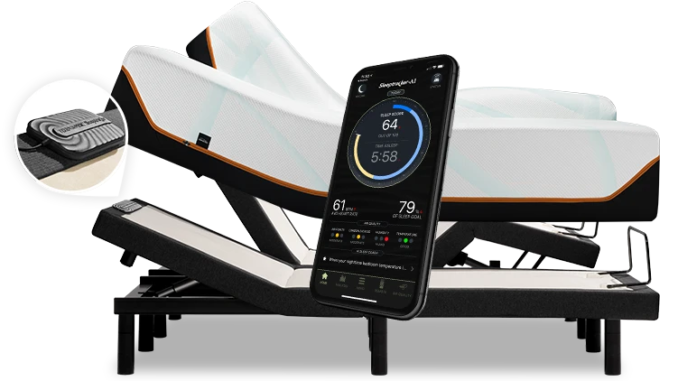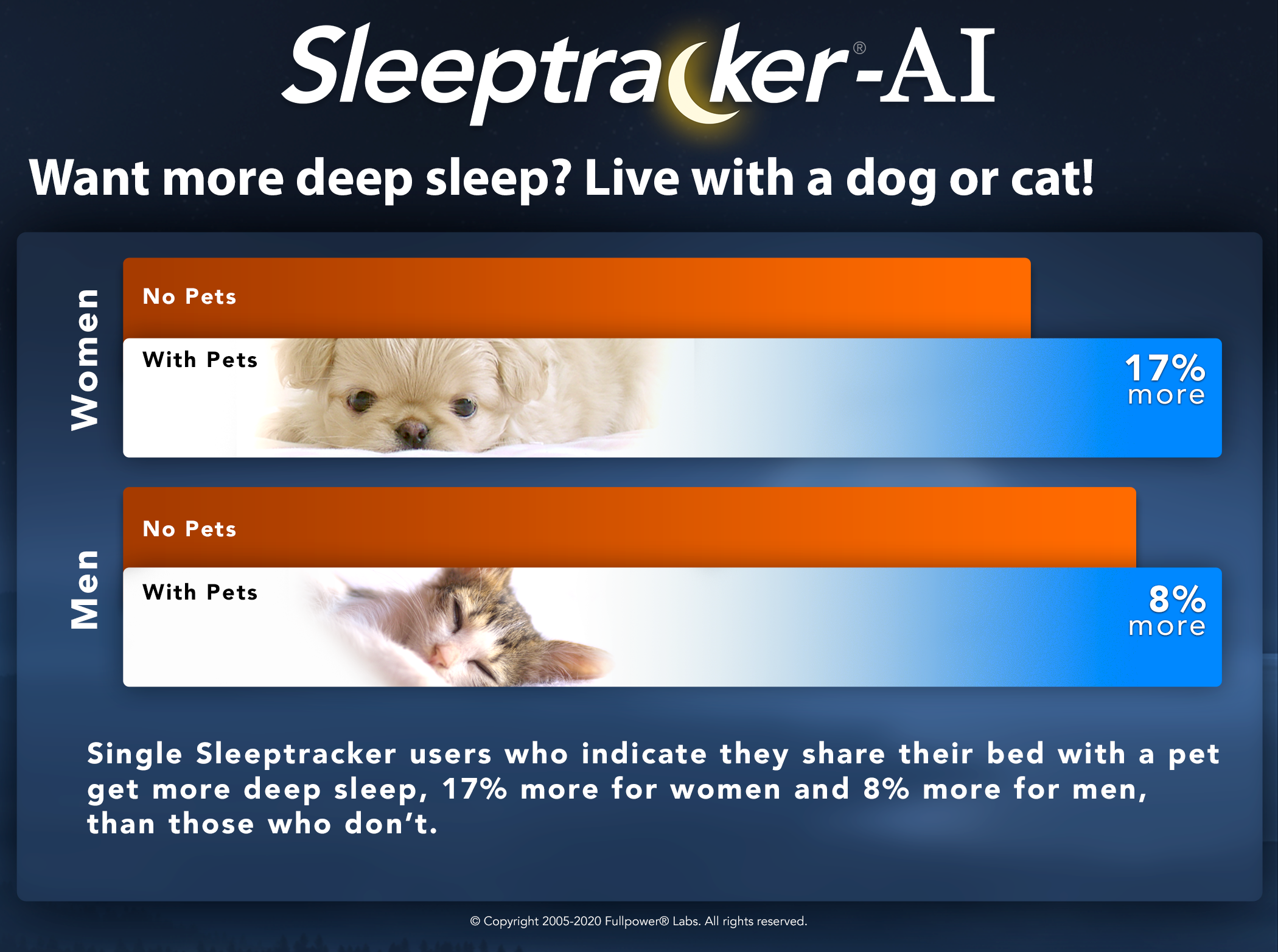

by Larry Magid
In order to write this column I, literally, had to sleep on the job. For the past few months, my wife and I have been sleeping on a “Tempur-Ergo Smartbase powered by Sleeptracker-AI.” That’s a mouthful, but it’s basically a Tempur-Pedic bed with an adjustable base, equipped with technology that tracks your heart rate, breathing rate, snoring and other metrics while you sleep. It also detects and attempts to suppress snoring.
The bed, which was provided by Tempur-Pedic for review, has sensors and a processor that monitors you as you sleep. You connect it to your WiFi network and you can monitor and control the bed through a smartphone app.
The app provides a daily report, including a sleep score with a general overview of how well you slept that night. It also shows when, how long and how many times you woke up at night  and graphs both your heart and breathing rate over the course of the night, your average heart and breathing rate, each time you snored, and your amount of deep sleep, light sleep and REM sleep, along with what time you fell asleep and the percentage of time in bed you actually slept.
and graphs both your heart and breathing rate over the course of the night, your average heart and breathing rate, each time you snored, and your amount of deep sleep, light sleep and REM sleep, along with what time you fell asleep and the percentage of time in bed you actually slept.
The app’s “AI Sleep Coach” provides personal sleep statistics and personalized recommendations for better sleep.
Some of this information can also be displayed by smartwatches from Fitbit, Apple and other companies, but with this bed, there is nothing to wear and nothing to do other than to lie in bed. In my case, there are two sensors – one on the right side for me and another on the left where my wife sleeps, so we each get our own report each morning. The app also provides data by week, month and year.
The bed has an adjustable base and comes with a remote control for each sleeper that lets you lift your head or feet with settings to automatically adjust to certain positions, including “Zero G,” which is support to reduce pressure on your back and another that lifts the head area for watching TV or reading. There is also a “massage” feature that causes a vibration near your head, feet or middle along with programmable buttons to set your favorite positions. The remote, which lights up, also lets you turn on a light under the bed, which provides just enough light to see where you’re going if you get up in the middle of the night but, hopefully, not enough to wake up a sleeping partner.
I didn’t realize that I snored until I started sleeping on this bed. For mild snoring, it lifts the head slightly to put you in a position where you’re less likely to snore. With intense sustained snoring, it will vibrate gently to remind you to — perhaps — roll over on your side. The app tells you when, how often and how intensely you snored the previous night.
Sleep Number also offers smart beds that measure biometrics. I’ve seen them at trade shows but have never spent the night on one.
While Tempur-Pedic makes and sells the bed, the technology that makes it smart is from Fullpower-AI, a Santa Cruz company founded and led by Philippe Kahn, whom I’ve been covering since the 1980s when he ran Borland International, once a very prominent software company. Kahn went on to form several other companies and is credited as the inventor of the camera phone.
In an email, Kahn described the AI (artificial intelligence) behind the Sleeptracker systems as “a textbook application for deep learning.” The company runs two medical sleep labs and a PSG Lab (Polysomnography) where it tests its technology against medical gold standards for collecting data while people are asleep. PSG, according to the Mayo Clinic is a “comprehensive test used to diagnose sleep disorders,” that records “your brain waves, the oxygen level in your blood, heart rate and breathing, as well as eye and leg movements.” Kahn said that the company has collected data on more than 250 million nights of sleep.
Trends
The ability of the app to record trends over time is interesting from both a personal and societal perspective, especially during these trying times. The company has a website

(sleeptracker.com) that provides infographics that show how the pandemic, the election, the holidays and even a local earthquake have affected sleep patterns. For example, people’s averages heart rates were lower during the 2020 holidays than during the two previous years, which is generally a good thing. During shelter-in-place we sleep more, go to bed later and wake up later, but there is no significant difference in how often we get out of bed each night. Sheltering-in-place also correlates with more REM sleep and less deep sleep, which could be a sign of increased anxiety. Not surprisingly, on the night of the presidential election, we collectively went to bed later, had significantly less sleep and a higher heart rate. I’m not sure why, but once the lockdown started, South Dakota and Louisiana got more sleep than the rest of us. One chart shows that people who live with a pet get more sleep.
One big advantage to all of this data is that it provides experts and the rest of us with metrics on how a broad swath of people are sleeping. Most of our sleep data come from medical sleep labs where doctors send patients who are experiencing problems such as suspected sleep apnea. But Sleeptracker not only has a lot more data, it has it from a much wider sample of the population. Fitbit and other companies that make smartwatches with sleep monitoring also have cumulative data.
Like fitness bands, blood pressure monitors, bathroom scales or any other measuring technology, it’s what you do with the information that can lead to better health. Although I still sometimes have difficulty sleeping, I have heeded the feedback as well as some of the advice offered by the app to avoid eating two hours before bed, reducing screen time before bed and trying to lower my stress level through meditation and other techniques.
Larry Magid is a tech journalist and internet safety activist.